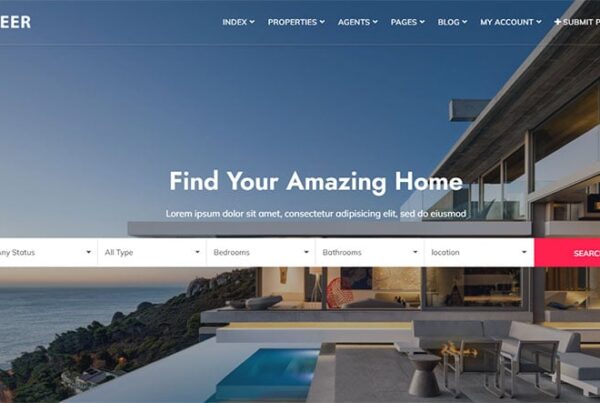Your website is more than a digital brochure. It’s your storefront, your sales team, and often the first interaction a potential customer has with your business. But what if that first impression is also the last? Every pixel, word, and second counts when it comes to keeping visitors engaged and converting them into customers. The harsh reality is this: if your website isn’t pulling its weight, it could be quietly driving people away. And you may not even know it. Let’s peel back the curtain on why your website might be losing you customers—and what you can do to fix it before it damages your reputation or bottom line.
Your Site Looks Outdated—And That’s Hurting Trust
Think of your website like a storefront. If the windows are dirty, the lights are flickering, and the signage is from 2008, most people won’t even walk through the door. The same rule applies online. An outdated website design signals to your potential customers that you’re either behind the times, not paying attention, or—worst of all—not trustworthy. It takes about 0.05 seconds for users to form an opinion about your site. That’s less time than it takes to blink. If your design looks like it hasn’t evolved since the early days of the internet, people won’t wait around to see if your services are modern. They’ll click away and find someone who looks like they care about their digital presence. Investing in a clean, contemporary design that aligns with your brand instantly elevates your credibility. People do judge a book by its cover, especially online.
Navigation Is a Nightmare
Once someone lands on your site, their next move should be easy. But if your navigation is confusing, cluttered, or simply broken, you’ve lost them. People don’t have the patience to dig for what they need. If your contact form is hidden, your services page takes too many clicks to find, or your mobile menu is a maze, you’re pushing people out the virtual door. Good navigation is intuitive. Think like your customer. What would they want to find, and how quickly can they find it? The best websites guide visitors smoothly from interest to action, making sure every path leads to conversion.
Your Site Isn’t Mobile-Friendly—And That’s a Dealbreaker
More than half of all web traffic comes from mobile devices. If your website doesn’t look and function perfectly on a phone, you’re already losing a major segment of your audience. Pinching and zooming to read text, buttons that don’t work, slow loading times—these are all signs that your mobile experience is broken. And it doesn’t just cost you customers. It can hurt your rankings in Google, too. Search engines now prioritize mobile usability. A poor mobile experience means fewer people even find you in the first place. A responsive design that adapts seamlessly to any screen size isn’t a luxury. It’s a requirement. Your users should have the same high-quality experience whether they’re on a desktop in an office or on their phone in a coffee shop.
Speed Kills—If Your Site Is Slow, So Are Your Sales
In the digital world, every second matters. Studies show that 40% of people will abandon a site that takes more than three seconds to load. Three seconds. That’s all you get. A slow website can be caused by uncompressed images, bloated code, bad hosting, or even too many plugins. But your visitors don’t care why—it just feels frustrating. And frustration is the enemy of conversion. Optimizing your website’s speed isn’t just a technical upgrade. It’s a sales strategy. When your site loads quickly, people stay longer, click more, and trust your business more.
You’re Speaking in Jargon Instead of Solving Problems
Too many websites are filled with buzzwords, industry terms, and vague promises that don’t actually connect with the customer’s pain points. Visitors don’t care that you’re “innovative” or “solution-oriented.” They want to know how you’ll make their life better, solve their problem, or save them time or money. Your copy should speak directly to your audience in a language they understand. Show empathy. Be clear. Cut the fluff. Make sure every word earns its place by providing value, not just space. Remember, your website isn’t for you. It’s for your customer. Speak their language—not yours.
There’s No Clear Call to Action
You’ve got traffic. Great. But what do you want people to do once they get there? Should they book a call? Fill out a form? Make a purchase? Download something? If you don’t clearly tell people what to do next, they won’t do anything. Every page of your website should have a purpose—and that purpose should be obvious. A strong, clear, and action-oriented call to action (CTA) is essential. It should be easy to find, impossible to miss, and compelling enough that people want to click. Your CTA is the bridge between browsing and buying. Build it wisely.
Your Content Is All About You
Too many business websites make the mistake of talking only about themselves. “We’ve been in business since 1999.” “We’re passionate about our clients.” “We offer a wide range of services.” That’s all fine—but it’s not why people are visiting your site. Visitors want to know what’s in it for them. How can you solve their problem? How will your service make their life easier, better, or less stressful? Flip the script. Make your customer the hero of the story, and position your business as the guide who helps them succeed. When your content focuses on their journey—not just your credentials—they’ll stick around to learn more.
You’re Not Tracking Anything
If you don’t know how your website is performing, you can’t fix what’s broken. And if you’re not tracking data, you’re flying blind. Are people visiting your site but not converting? Are they dropping off on a certain page? Are your traffic sources even working? With tools like Google Analytics and heatmaps, you can understand how people interact with your site. You’ll see where they click, where they scroll, and where they bounce. This insight helps you make smart changes that actually improve results—not just guess and hope for the best. Data is your best friend in digital marketing. If you’re not using it, you’re falling behind.
No Trust Signals = No Sales
You could have the best service in the world, but if visitors don’t trust you, they won’t buy. That’s where trust signals come in—client testimonials, Google reviews, case studies, industry certifications, and even secure website icons. People want proof. They want to see that others have worked with you and had a good experience. They want to feel like they’re making a safe, smart decision. And a website without these signals feels risky. Don’t be modest—this is the place to show off what others say about you. A few powerful testimonials can be more persuasive than a dozen sales pages.
You’re Not Telling a Story
People don’t remember stats. They remember stories. And your website should tell one. It should guide the visitor through a narrative—from the problem they’re facing, to the solution you provide, to the transformation they’ll experience after working with you. That arc, that story, is what keeps people emotionally invested. Storytelling builds connection. And connection leads to conversion. A lifeless, corporate website filled with facts and features won’t make your brand memorable. But a site that tells a story? That’s the one people come back to.
How to Fix It (Before You Lose Another Customer)
So, what now? Start with a website audit. Look at your site from a customer’s perspective. Is it easy to use? Is the design clean and modern? Are your messages clear and benefit-driven? Does it work on all devices? Does it load fast? If the answer to any of those is no, it’s time to take action. Whether you’re revamping your current site or starting fresh, focus on creating a digital experience that makes your visitors feel confident, understood, and excited to work with you. Because the truth is, your website isn’t just a box to check off. It’s a living, breathing extension of your brand. And when done right, it can become one of your most powerful tools for attracting and converting new customers.
Let’s Talk About Your Website
At Webn8, we specialize in websites that don’t just look good—they perform. We understand the psychology of online behavior and build with purpose. If you’re tired of wondering whether your website is working, let us show you what’s possible. Don’t let your digital storefront push people away. Let’s turn it into your best salesperson.



